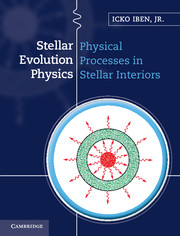Book contents
- Frontmatter
- Contents
- Preface
- Part I Introduction and overview
- 1 Qualitative description of single and binary star evolution
- 2 Quantitative foundations of stellar evolution theory
- Part II Basic physical processes in stellar interiors
- Part III Pre-main sequence, main sequence, and shell hydrogen-burning evolution of single stars
- Index
- References
2 - Quantitative foundations of stellar evolution theory
from Part I - Introduction and overview
Published online by Cambridge University Press: 05 December 2012
- Frontmatter
- Contents
- Preface
- Part I Introduction and overview
- 1 Qualitative description of single and binary star evolution
- 2 Quantitative foundations of stellar evolution theory
- Part II Basic physical processes in stellar interiors
- Part III Pre-main sequence, main sequence, and shell hydrogen-burning evolution of single stars
- Index
- References
Summary
The characteristics of the Sun and of other bright stars for which distances can be estimated constitute the major observational foundation of the disciplines of stellar structure and stellar evolution. The Sun's basic global characteristics, which provide natural units for cataloguing the global characteristics of other stars, are descibed in Section 2.1. Properties of some bright stars in familiar constellations and of some nearby stars for which masses have been estimated are described in Section 2.2, with several of the more familiar stars being shown in the Hertzsprung–Russell (HR) diagram, where a measure of intrinsic brightness (luminosity) is plotted against surface temperature (color). It is evident that nearby and/or visually bright stars form distinctive sequences in the HR diagram.
Mass and luminosity estimates for stars in relatively wide binary systems as well as for those in close, but detached systems are presented in Section 2.3. Comparing these estimates in a mass-luminosity (ML) diagram, one may infer that, for systems in which proximity does not imply mass transfer between components or significant tidal interaction, the relationship between mass and luminosity for either component is not greatly affected by the presence of a companion. Comparing the locations of individual stars in the HR and ML diagrams, one can infer that stars probably evolve between sequences in the HR diagram.
In Section 2.4, the evolution of the interior and global characteristics of theoretical stellar models is sketched and, in Section 2.5, the theoretical results are employed to interpret the significance of the different branches defined in the HR diagram by nearby and/or visually bright stars and to identify the evolutionary status of familiar stars in the night sky.
- Type
- Chapter
- Information
- Stellar Evolution Physics , pp. 30 - 54Publisher: Cambridge University PressPrint publication year: 2012



